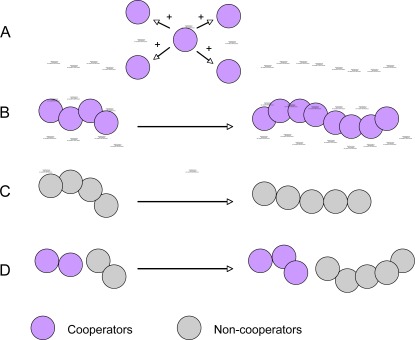Figure 3.
A schematic diagram describing quorum sensing-mediated social cooperation and conflict. Social cooperation provides benefits to the population but has a cost for the cooperative cells. Cooperative cells provide fitness benefits to the entire population (A) and have a higher productivity or yield in an exoproduct (B). However, non-cooperative cells (cheaters) may have the lower productivity (C), but can exploit the benefits from the cooperative cells without contribution in mixed populations (D).

